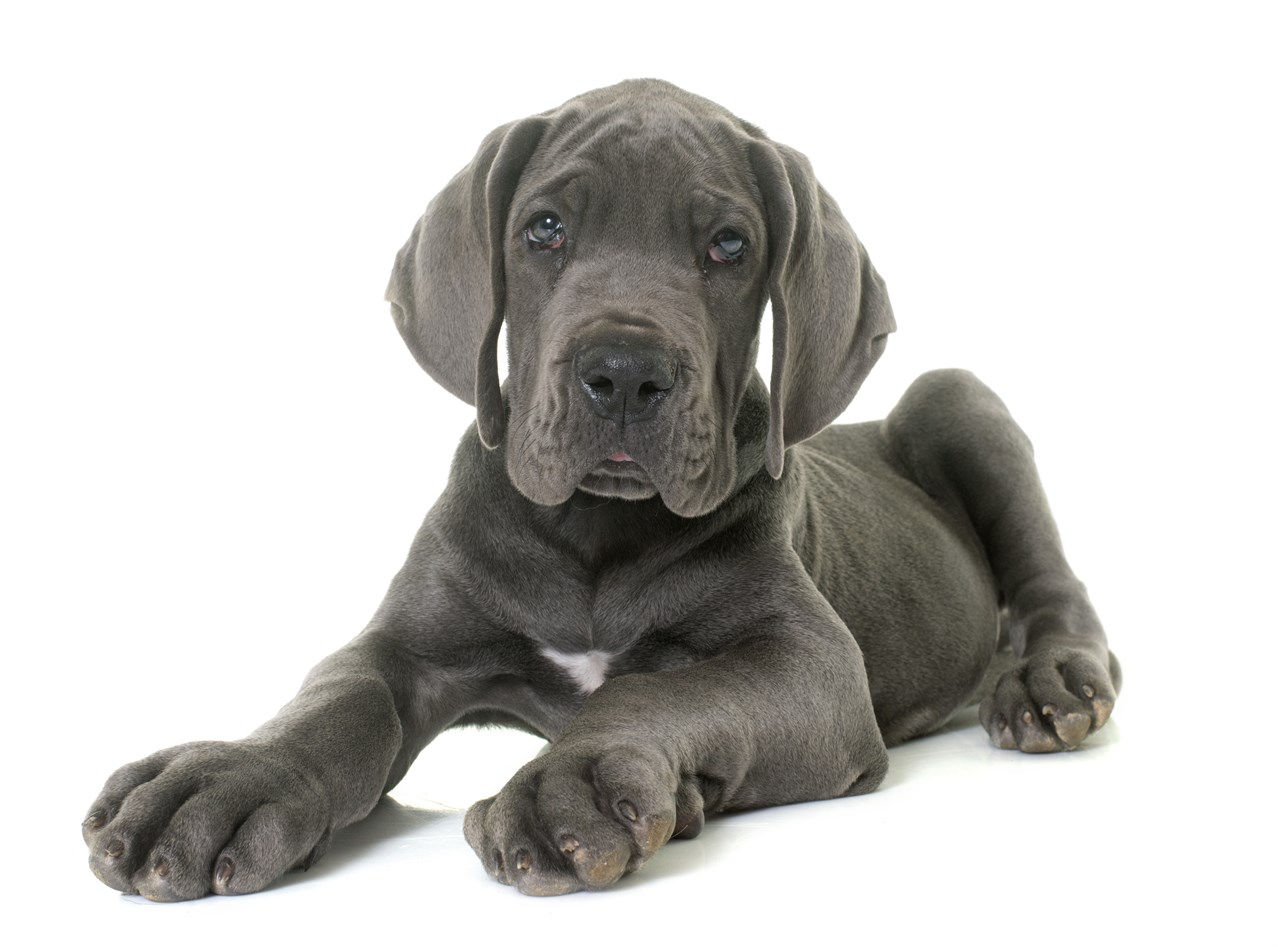Great Dane Common Health Issues

Great Danes are magnificent and gentle giants, but like all breeds, they are prone to certain health issues. Responsible breeding and regular veterinary care can help manage and minimise these concerns. Here are some common health issues associated with Great Danes.
Bloat (Gastric Torsion)
Bloat is a severe and life-threatening condition that can affect Great Danes. It occurs when the stomach fills with gas and twists on itself, obstructing blood flow and leading to tissue damage. Immediate medical attention is essential to save a dog with bloat.
Dilated Cardiomyopathy (DCM)
DCM is a form of heart disease that is relatively common in Great Danes. It can lead to an enlarged and weakened heart, resulting in heart failure. Regular veterinary check-ups and early detection are crucial for managing this condition.
Hip Dysplasia
Hip dysplasia is a genetic condition that affects the hip joints, causing pain and mobility issues. Great Danes can be prone to hip dysplasia, and responsible breeding practises aim to reduce the risk.
Osteosarcoma (Bone Cancer)
Great Danes are susceptible to bone cancer, particularly in their limbs. Signs may include lameness or swelling. Early detection and treatment are essential in managing this aggressive cancer.
Hypothyroidism
Hypothyroidism is a hormonal disorder that can affect Great Danes. It can lead to weight gain, lethargy, and skin issues. Treatment typically involves medication to regulate thyroid function.
Gastric Dilation Volvulus (GDV)
GDV is another term for bloat. Great Danes are particularly at risk due to their deep chests. Preventive measures, such as feeding smaller, frequent meals and avoiding exercise immediately after eating, can help reduce the risk.
Wobbler Syndrome (Cervical Spondylomyelopathy)
Wobbler Syndrome is a neurological condition that affects the spine. It can result in weakness, difficulty walking, and an unsteady gait. Treatment options may include medication or surgery.
Osteoarthritis
Great Danes, like many large breeds, can develop osteoarthritis as they age. It can cause pain and stiffness in the joints. Management may involve pain medication, weight control, and joint supplements.
Entropion and Ectropion
These are eye conditions where the eyelids roll inward (entropion) or outward (ectropion). They can lead to eye irritation and discomfort, and surgical correction may be necessary.
Bloat (Gastric Torsion)
Bloat is a severe and life-threatening condition that can affect Great Danes. It occurs when the stomach fills with gas and twists on itself, obstructing blood flow and leading to tissue damage. Immediate medical attention is essential to save a dog with bloat.
Why are Great Danes called a heartbreak breed?
Great Danes are sometimes referred to as a "heartbreak breed" because of their relatively short life span compared to smaller dog breeds. Their large size makes them prone to certain health issues, and their lifespan typically ranges from 7 to 10 years. This relatively shorter life expectancy can be heartbreaking for their owners, who often form deep bonds with these gentle giants. Responsible breeding practises and attentive veterinary care aim to mitigate health concerns and potentially extend their life expectancy, but their size and genetics still contribute to the breed's reputation as a heartbreak breed.
Great Dane puppies for sale
- Find Great Dane puppies for sale in ACT
- Find Great Dane puppies for sale in NSW
- Find Great Dane puppies for sale in NT
- Find Great Dane puppies for sale in QLD
- Find Great Dane puppies for sale in SA
- Find Great Dane puppies for sale in TAS
- Find Great Dane puppies for sale in VIC
- Find Great Dane puppies for sale in WA